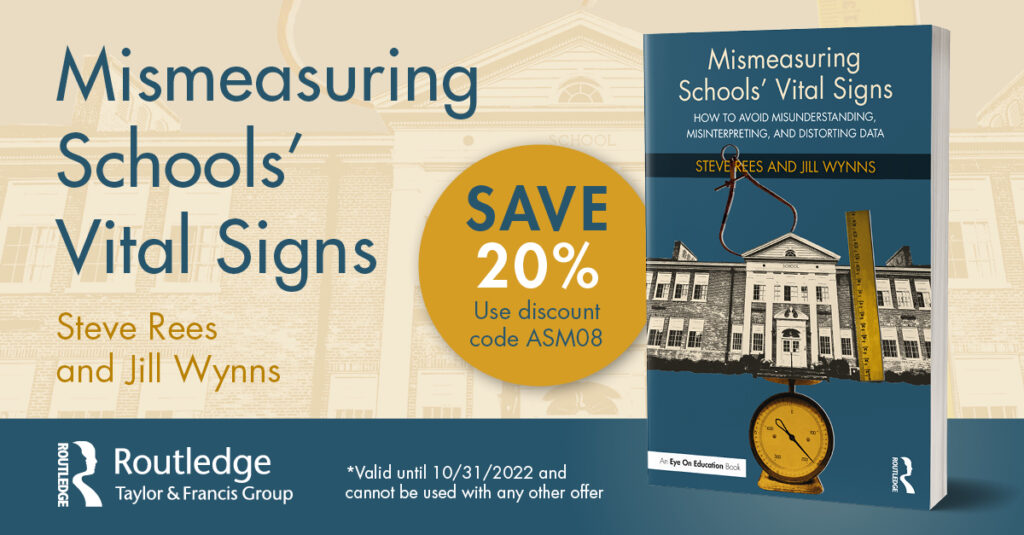Chapter 1
What is mismeasurement and where does it originate?
Table of Contents
Chapter 1 Overview
This chapter defines mismeasurement and categories three types of errors: errors of commission, omission, and judgment. Data is usually considered to be the object of analysis. But data is just a raw record of human observation. Data must be built into evidence prior to analysis. How do errors originate? Semantic confusion, assessment misunderstandings, logic flaws, arithmetic errors, and visual misrepresentation of evidence are among the reasons. The high frequency of teachers’ misinterpretation of test results is a starting point for asking how school districts detect errors of human judgment. The chapter advances two methods of analysis that are feasible for non-technical educators: comparative effectiveness and practical benefit. Finally, the chapter looks at the sources of resistance to evidence and empirical methods.
Chapter 1 Excerpt
Chapter 1 References
Hattie, John. Visible Learning: A Synthesis of Over 800 Meta-Analyses Relating to Achievement. New York: Routledge, 2008.
Meehl, Paul E. Clinical Versus Statistical Prediction: A Theoretical Analysis and a Review of the Evidence. Minneapolis: University of Minnesota Press, 1954.
Paulos, John Allen. Innumeracy: Mathematical Illiteracy and Its Consequences. New York: Hill and Wang, 1989.
Popham, James W. Unlearned Lessons: Six Stumbling Blocks to Our Schools’ Success. Cambridge: Harvard Education Press, 2009.
Rampey, B.D., Finnegan, R., Goodman, M., Mohadjer, L., Krenzke, T., Hogan, J., and Provasnik, S. (2016). Skills of U.S. Unemployed, Young, and Older Adults in Sharper Focus: Results From the Program for the International Assessment of Adult Competencies (PIAAC) 2012/2014: First Look,” (NCES 2016-039rev). U.S. Department of Education. Washington, DC: National Center for Education Statistics. Retrieved October 30, 2018, from https://nces.ed.gov/pubs2016/2016039rev.pdf
Rankin, Jenny. “Over-the-Counter Data’s Impact on Educators’ Data Analysis Accuracy.” PhD dissertation, Northcentral University, 2013. ISBN: 978-1-303-52615-2 http://pqdtopen.proquest.com/doc/1459258514.html?FMT=ABS
Rankin, Jenny. Standards for Reporting Data to Educators: What Educational Leaders Should Know and Demand. New York: Routledge, 2016.
Wasserstein, Ronald L., Allen L. Schirm, and , Nicole A. Lazar. “Moving to a World Beyond p < 0.05.” The American Statistician. 73:sup1, 1-19 (March 2019). DOI: 10.1080/00031305.2019.1583913
Ziliak, Stephen T., and Deirdre N. McCloskey. The Cult of Statistical Significance: How the Standard Error Costs Us Jobs, Justice, and Lives. Ann Arbor: University of Michigan Press, 2008.


